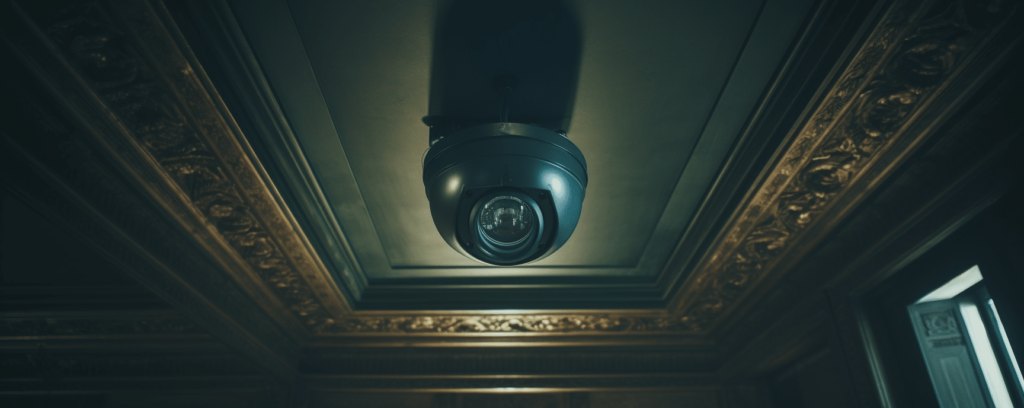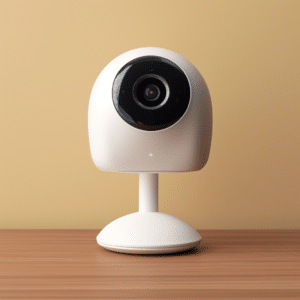Can You Put a Camera in a Nursing Home Room?
Last updated Sunday, February 4th, 2024

Can you put a camera in a nursing home room? The answer hinges on a web of state laws and individual nursing home policies. Our in-depth guide provides clarity on this issue, from the legalities of surveillance to maintaining residents’ dignity and privacy. Discover the careful balance required to keep loved ones safe in their nursing home environments.
Key Takeaways
- The legality of using cameras in nursing home rooms is complex, varying widely by state laws and individual facility policies, with only a few states explicitly permitting their use and others requiring consent.
- Surveillance cameras in nursing homes can enhance safety and deter abuse but also raise serious privacy and ethical concerns, potentially infringing upon the dignity and trust of residents and staff.
- Alternatives to cameras, such as regular visits, communication, and legal advocacy, can be effective in ensuring the safety and well-being of nursing home residents without compromising privacy.
Get Your FREE Case Review Today
Contact us today and we will help you get the compensation that you deserve.
or Send Us Your Case DetailsGet Your FREE Case Review Today
Contact us today and we will help you get the compensation that you deserve.
or Send Us Your Case DetailsUnderstanding the Legalities of Cameras in Nursing Homes
Before delving into the debate on the usage of cameras in nursing homes, a thorough understanding of the legal backdrop is crucial. Cameras are not merely tools of surveillance but are governed by state laws and facility regulations. These laws and regulations vary greatly from one state to another, creating a complex web of legalities that surround the use of cameras in nursing homes.
For instance, only a handful of states permit the use of cameras in nursing home rooms as of 2022. These states include:
- Illinois
- Kansas
- Louisiana
- Minnesota
- New Mexico
- Ohio
- Oklahoma
- Texas
But the picture doesn’t end with state laws. The policies of individual nursing homes can further complicate the matter. Some facilities may have regulations explicitly forbidding the use of cameras or setting strict guidelines for their use.
State Regulations on Nursing Home Cameras
State regulations are a crucial component in determining the legality of camera use in nursing homes. However, these laws vary significantly from one state to another, making it a complex issue to navigate. For example, while New York leaves the decision up to individual nursing homes, Texas law allows residents to install surveillance cameras in their rooms.
On the other hand, California places more emphasis on consent and privacy. In California, camera installation is only permissible in public areas, and even then, it requires patient consent. Moreover, long-term care facilities need to respect requests to install surveillance cameras while also upholding privacy and preventing elder abuse.
Facility Policies and Consent Requirements
In addition to state laws, the rules and regulations of individual nursing homes significantly influence the usage of cameras. Many facilities require consent for camera installation, usually obtained through the facility’s admission agreement. Notably, the act of installing a camera without proper consent can lead to legal repercussions, including the possibility of violating laws against recording audio without consent in states like Florida and potential harm to the individuals involved, including elder abuse.
To navigate these complexities, nursing homes often require specific forms to obtain consent. These documents may include:
- Consent forms and instructions for electronic technology use
- Electronic monitoring consent forms
- Resident consent forms for nursing home camera monitoring
Assessing the Benefits and Drawbacks of Installing Cameras in Nursing Homes
Now that we’ve explored the legal landscape, we can focus on the concrete effects of camera installation in nursing homes. Like any other measure, the use of surveillance cameras has its own set of benefits and drawbacks. While they can enhance safety and discourage abuse, they can also provoke significant privacy issues and ethical conundrums.
Advantages: Ensuring Safety and Preventing Abuse
Nursing home cameras can play a pivotal role in ensuring the safety of the residents. By providing a constant and vigilant eye, they can enhance the security of the facility and enable swift responses to incidents. More importantly, surveillance cameras can act as a powerful deterrent against potential abusers, who may be less likely to engage in abusive behavior when they know they could be caught on camera.
In addition to preventing abuse, surveillance cameras can bring about increased accountability. By keeping a close watch on care routines, these cameras can address concerns, foster trust between the staff and residents, and discourage misconduct. Through these means, surveillance cameras can play a significant role in ensuring a safe and respectful environment for the residents.
Disadvantages: Privacy Concerns and Ethical Dilemmas
While the merits of surveillance cameras are clear, they do not come without potential downsides. The key issue revolves around privacy. Cameras can potentially capture residents during private activities such as bathing or changing, which may violate personal dignity and privacy. This risk extends not just to the residents, but also to other patients and employees, adding a layer of complexity to the debate.
Beyond privacy, ethical concerns also arise. Installing cameras in nursing homes can potentially undermine the sense of trust between caregivers and residents. Furthermore, there’s the concern that camera monitoring could extend to surveilling staff behavior, creating a sense of being constantly watched and judged.
Types of Surveillance Cameras for Nursing Homes
Having discussed the advantages and disadvantages, it’s vital to comprehend the variety of cameras that can be used in nursing homes. From hidden cameras to security systems, each type brings its own set of features and considerations.
Hidden Cameras and Nanny Cams
Hidden cameras or “nanny cams” are often used by families to discreetly monitor the care their loved ones receive. These cameras can be installed in residents’ rooms and are usually concealed inside everyday items such as:
- Clocks
- Picture frames
- Smoke detectors
- Teddy bears
This helps to avoid detection and ensure that the camera captures the true behavior and actions of the caregivers.
However, the use of hidden cameras raises significant legal considerations. As discussed earlier, many states and facilities require explicit consent for the use of these cameras. Moreover, the presence of a hidden camera can potentially infringe upon the privacy rights of other residents and staff, leading to further legal and ethical dilemmas.
Security Cameras and Monitoring Systems

When selecting a security camera for a nursing home, it’s important to consider the camera’s features. Here are some key features to look for:
- High-quality video resolution
- Wide field of view
- Good frame rate for smooth playback
- Night vision capabilities
- Stereo analysis cameras to aid staff in monitoring residents and responding to emergencies
These features are essential for effective surveillance in a nursing home setting, particularly in a nursing home room.
Best Practices for Installing and Using Cameras in Nursing Homes
Regardless of whether you choose hidden cameras or a comprehensive security system, certain best practices should be adhered to when installing and operating cameras in nursing homes. From obtaining proper consent to balancing safety and privacy concerns, these practices ensure that the use of cameras aligns with both legal requirements and ethical considerations.
Obtaining Proper Consent and Following Regulations
Obtaining proper consent is a crucial step in installing cameras in nursing homes. Consent must be explicit and informed, and it often needs to be obtained from both the resident and the facility’s supervisors. Without this consent, the use of cameras can lead to legal repercussions and potential harm to the individuals involved.
Following regulations is equally important. This includes familiarizing oneself with the laws and regulations of their state. As mentioned earlier, only a few states permit the installation of surveillance cameras in nursing home rooms. Therefore, it’s crucial to check the specific regulations and requirements in your state to ensure compliance.
Balancing Safety and Privacy Concerns
Alongside obtaining consent and following regulations, it’s important to find a balance between ensuring safety and respecting privacy. Cameras should be installed in a manner that enhances safety without infringing on the privacy of residents. This involves considering the placement of cameras, which should be restricted to common areas and walkways.
Installing cameras in private spaces like a resident’s room or bathrooms should be avoided unless explicit consent is given. Additionally, any use of cameras must comply with the explicit consent provided by the residents or their guardians.
Alternatives to Cameras for Protecting Loved Ones in Nursing Homes
As we traverse the intricate terrain of camera usage in nursing homes, it’s valuable to ponder over alternatives that can ensure safety without breaching privacy, such as implementing a camera in a nursing home’s common area.
Regular visits and communication, coupled with legal advocacy and support, can play a significant role in ensuring the well-being of a family member in nursing homes, especially when it comes to their loved one’s room.
Regular Visits and Communication
Regular visits and communication can be a vital tool in ensuring the safety and well-being of nursing home residents. By visiting frequently and maintaining open lines of communication, family members can monitor the care their loved ones receive and establish effective relationships with the nursing home staff.
The frequency of visits can vary based on the individual needs and preferences of the resident. Whether it’s daily visits or a few times a week, the key is to maintain a regular presence. This not only helps in monitoring the care provided but also enables family members to promptly report any suspicious incidents of abuse or neglect.
Legal Advocacy and Support
Legal advocacy and support can provide an additional layer of protection for nursing home residents, including those in assisted living facilities. This involves actively supporting and defending the rights and overall welfare of elderly residents in nursing facilities.
A legal advocate can play several roles, from ensuring quality care to addressing issues and grievances. They can also engage in the development and execution of the resident’s care plan. To secure the services of a legal advocate, one can contact the nursing home ombudsman, report concerns, and seek assistance from the ombudsman.
When to Seek Legal Help for Nursing Home Abuse or Neglect
Spotting abuse or nursing home neglect in nursing homes is vital in guaranteeing the safety and wellness of the residents. Understanding the signs of abuse or neglect and knowing when to seek legal help can make a significant difference in addressing such issues.
Identifying Signs of Abuse or Neglect
Identifying the signs of abuse or neglect is the first step in protecting loved ones in nursing homes. These signs can range from visible injuries and health issues to changes in behavior or mood. Regular visits and open communication can aid in detecting these signs early.
Furthermore, financial exploitation is another form of elderly abuse that can be hard to detect. Indicators of financial exploitation include:
- Unauthorized use of an elder’s finances
- Unusual changes in spending
- Unexplained loans
- Behavior that suggests fear surrounding financial issues
Pursuing Legal Action and Compensation
In cases of abuse or neglect, legal action and compensation can provide a means to address the harm done. A lawyer specializing in nursing home abuse or neglect cases can assist in pursuing a claim against the perpetrators and responsible parties, seeking compensatory damages and justice for the affected individual.
Obtaining compensation may involve various avenues, such as:
- a settlement
- a trial verdict
- criminal restitution
- other available means
It’s important to remember that these cases can take time, with an average duration of 2 to 3 years.
Frequently Asked Questions
Can I put a camera in my mom's room in the nursing home?
No, you should not put a camera in your mom’s room in the nursing home without her consent or approval from the facility, as it can violate laws and the facility’s policy.
Should hidden cameras be allowed in nursing home rooms?
No, hidden cameras should not be installed in nursing home rooms without consent from the resident or approval from the facility. Doing so could violate laws and privacy policies.
Are there state laws that permit the use of cameras in nursing home rooms?
Yes, only nine states, including Illinois, Kansas, Louisiana, Minnesota, New Mexico, Ohio, Oklahoma, and Texas, permit the use of cameras in nursing home rooms. Consider checking the specific regulations in your state if you are considering this option.
What are the benefits of using surveillance cameras in nursing homes?
Surveillance cameras in nursing homes can enhance security, deter potential abusers, provide a documented record of events, and ensure accountability in care. This can help ensure the safety and well-being of residents.






